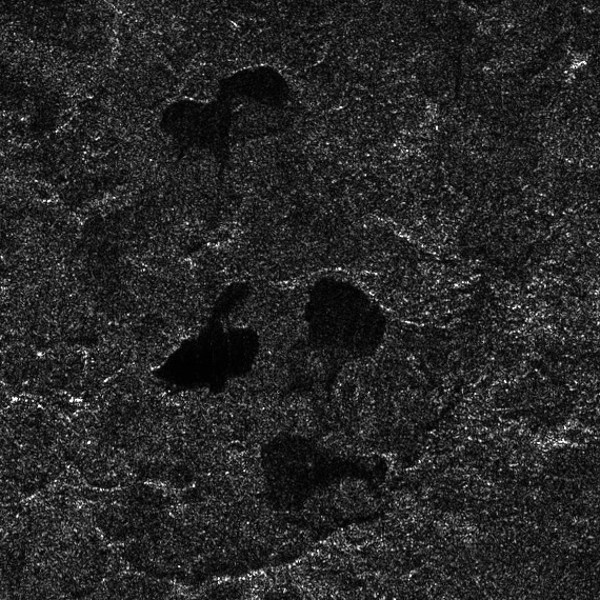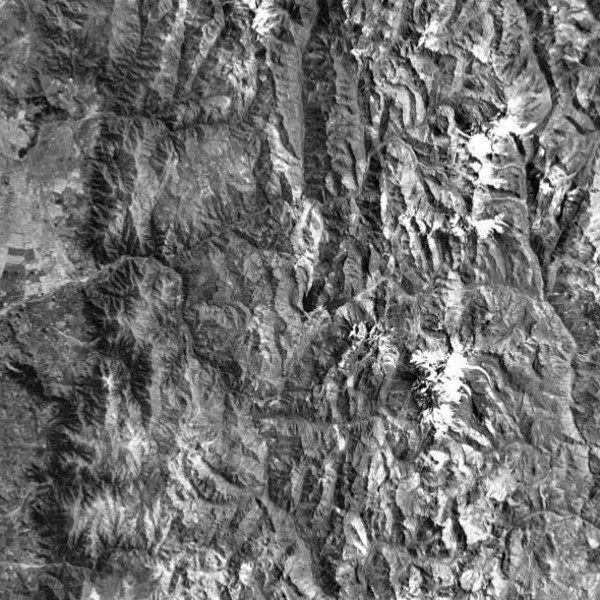July 16, 2018 : Researchers Use A Biosensor To Detect Biomolecules In Glacial Lakes On Earth And May Use It For Other Worlds Like Mars Or Titan In The Future
A recent article entitled « Biomarkers and Metabolic Patterns in the Sediments of Evolving Glacial Lakes as a Proxy for Planetary Lake Exploration » and published online in May of 2018 in Astrobiology reveals that Laguna Negra and Lo Encanado, two lakes found at a high altitude in the Andes Mountains in Chile, can teach us a lot regarding the identification or the evolution of life on our planet or even on other worlds. Victor Parro, a researcher based at the Centro de Astrobiologia, in Madrid, Spain and his collaborators used a special instrument to detect or identify biomarkers or signs of life in the high-altitude lakes bombarded by UV radiations from the Sun. The biomolecules or the complex organics identified with this kind of technology are likely to tell us a lot regarding the evolution of life from typical lifeforms to more exotic lifeforms. The identification of biomarkers in glacial lakes which are exposed to relatively high levels of UV light from our star may help astrobiologists in their search for extraterrestrial life and allows them to unveil the properties of the environments in which the organisms or creatures lived. Several worlds in the Solar System draw our whole attention regarding the possibility of an exotic lifeform. One can mention Mars, Europa, Io, Titan, Enceladus, Triton or Pluto.
Victor Parro and his team focused their attention on Laguna Negra and Lo Encanado, two lakes whose water is poor in terms of nutrients. Those high-altitude lakes are fuelled by rapidly melting glaciers and capture a high level of ultraviolet light from the Sun. Thus, in the environmental conditions of Laguna Negra and Lo Encanado which are harsh and hostile for typical life, the group of Victor Parro is experimenting a life-detection technology in order to see whether we can apply it for other worlds. The planetologists need to correctly analyze those lake systems in the prospect of a better interpretation of biomarkers in ancient lakes on our planet and on other worlds of the Solar System. They can sample organics or biomolecules that accumulate in the sediments of the pools of liquid water. The biomolecules are related to ancient organisms which used to thrive there. The team of Victor Parro is in a position to infer the traces and history of their deaths since they are encoded in the biomolecules. The analysis of the biomolecules identified by the group is likely to allow researchers to determine the evolutionary history of extraterrestrial life.
Victor Parro pointed out : « Once a microbe dies, different physiochemical factors – such as humidity, temperature, oxygen, or the presence of metals – affect the degradation or chemical alteration of its structures and molecular components. » He explained that certain biomarkers are the outcome of certain categories of microbes and even particular metabolisms. He added : « From this information it is possible to infer what the environment where they developed was like. » The identification of certain types of biomarkers in the Andes Mountains is likely to bring us information regarding the paleoclimate of the mountains and the glaciers which are rapidly melting or thawing. The identification of biomolecules or complex organics may also allow us to determine the geochemical and atmospheric histories of other planets or worlds. On Mars, for instance, the rover « Curiosity » is studying the environment with the rocks around it with a major goal of finding complex molecules, bacteria, fossils or signs of ancient life. The giant moon of Saturn Titan is also a major target in terms of exobiology since the Titanian atmosphere is rich in hydrocarbons or organics and since there are lakes, seas and rivers of hydrocarbons in its polar regions or high latitudes.
UV light from the Sun plays a key role in the atmosphere of Titan as well as in our biosphere. Lewis Dartnell who is an astrobiologist at the University of Westminster, in London and who was not involved in the study advanced : « These high-altitude lakes in the Andes mountains are interesting for astrobiology because they are exposed to high levels of ultraviolet radiation. » He added : « Understanding how microbial life in the lake copes with these UV levels is important for the search for life beyond Earth – on Mars, for example, where there are believed to have once been crater lakes but also very high UV levels. » On the Red Planet, the Curiosity rover is currently studying a crater known as Gale Crater which used to be filled with liquid water in the distant past. A parallel could be drawn between the lakes studied by the team and Gale Crater since the ancient lake of Gale Crater may have been exposed to high levels of UV light from the Sun like the high-altitude lakes on Earth. Will we ever find signs of past life in Gale Crater ? Are there fossils or archaea beneath the surface of Gale Crater ? The exploration of Mars is far from being over and new questions or clues appear all the time.
The group of Victor Parro resorted to a Life Detector Chip or LDChip to identify some fragments of life in the high-altitude lakes. This device corresponds to a biosensor that can identify protein fragments and other biomolecules allowing us to conclude that they are the outcome of recent or ancient life or organisms. Victor Parro pointed out : « An LDChip doesn't need entire living microbes, it just needs biological material, whether it is alive or dead, recent or ancient, free or as part of large polymers or even organo-mineral particles [which are mineral by-products of life]. » The chip is capable of identifying the protein or family of proteins on the basis of a relatively limited amount of amino acids that is to say between four and ten amino acids. Let's recall that amino acids are molecules which represent the building blocks of Terrestrial life. Proteins are basically made of amino acids. The LDChip represents the main part of the Spanish Signs Of LIfe Detector known as SOLID, a device that can liquidize up to two grams of solid rock, soil or ice. The sample can then be analyzed for the hunt for biopolymers or complex organics. Thus, the instrument can identify signs of life in situ. Will it allow us to find ancient or active signs of life on Mars, Europa or Enceladus ?
The study of our own environment on Earth with this remarkable technology is crucial since we can make a parallel between some environments on Earth and on other planets or moons. We study extreme environments on Earth in order to study the behavior and the limits of extremophiles which may thrive on other worlds like Europa, Io or Enceladus. Researchers are in a position to develop new theories or to test their hypotheses or technologies. Astrobiologists often regard Laguna Negra as an analogue of the lakes found on the Opaque Moon Titan. Obviously, the composition of the lakes of Titan is completely different from that of the lakes on Earth but the solvents can facilitate complex chemical reactions on both worlds. Planetologists and exobiologists need to study water, glaciers and ice on Earth in order to correctly analyze the puzzle of life. Victor Parro advanced : « Ice and glaciers were and are common in other planetary bodies, such as Mars, and they must have played a critical role in the hydrogeology of those planets, the formation and behavior of ancient lakes, as well as in the development and evolution of potential Martian microbiology. » Mars is currently rich in water ice in its polar regions. Europa and Enceladus are also rich in water ice. So, water is widespread in the Solar System.
The group of Victor Parro analyzed the shallow sediments of the high-altitude lakes and determined the presence of sulphate-reducing bacteria, methanogenic archaea that is to say archaea which generate methane and exopolymeric substances (polymers, such as biofilms, secreted by organisms) from Gammaproteobacteria. The study clearly shows that life can adapt to extreme environments on Earth. Don Cowan, a professor of microbial ecology at the University of Pretoria, in South Africa claims that the presence of those organisms or extremophiles is not striking and « just what one would expect in a glacial lake sediment. » Were the organisms or molecules found significant biomarkers ? He answered : « All are important, in a general sense, in that identification of any of these biomarkers (which are examples of many possible biomarkers) in an 'astrobiological' sample, such as from Mars, would be definitive evidence of life. » Victor Parro and his team intend to produce a library of biomarkers because we need to be in a position to correctly analyze the various samples of organics, amino acids or biomolecules that we are likely to find on other worlds.
Victor Parro pointed out : « We need further studies and understanding of what biomarkers we can expect to find in different planetary environments. » The analytical work implies the identification of the most universal biomarkers and the study of those biomarkers on the way they are preserved and on the way they respond to typical radiations such as UV light from the Sun and other environmental conditions. A complete information on the various properties of the biomarkers or biomolecules will allow researchers to improve their tests or experiments for the presence of life on any world. Planetologists hope to be in a position to use the SOLID instrument with its LDChip on missions to other worlds in the Solar System. We would be able to identify biomarkers, biomolecules or complex organics which may be related to an exotic lifeform elsewhere. The SOLID instrument would also be helpful for future astronauts in their search for exobiological activity. At the present time, the scientists plan to use the innovative technology in as many Terrestrial environments as they can, from extreme places like Dallol to the veterinary sector as Victor Parro pointed out.
|
The image in the upper part of this table unveils an area of lakes in the high latitudes of Titan's northern hemisphere. The view is a portion of a radar swath obtained with the Radar Mapper of the Cassini spacecraft during the T83 Flyby of May 22, 2012. The image in the lower part of this table unveils the area of Laguna Negra, a glacial lake located at a high altitude in the Andes Mountains. Both images are 100 km wide and 100 km high. The color of the image showing Laguna Negra was removed to facilitate landscape comparison between both views. The study of Laguna Negra is likely to bring clues regarding the chemistry of Titan's lakes, seas or rivers since the chemistry of Laguna Negra is influenced by a high level of UV radiations received from the Sun. The chemistry of Titan's pools, dominated by hydrocarbons like methane, may be strongly influenced by the action of UV light from our star. Credit for the
original radar view of Titan: NASA/JPL/Cassini
RADAR Team/Jason Perry. |
- To get further information on that news, go to: https://www.astrobio.net/news-exclusive/how-glacial-biomarkers-can-hone-the-search-for-extraterrestrial-life and https://www.liebertpub.com/doi/abs/10.1089/ast.2015.1342?url_ver=Z39.88-2003&rfr_id=ori%3Arid%3Acrossref.org&rfr_dat=cr_pub%253dpubmed&.

